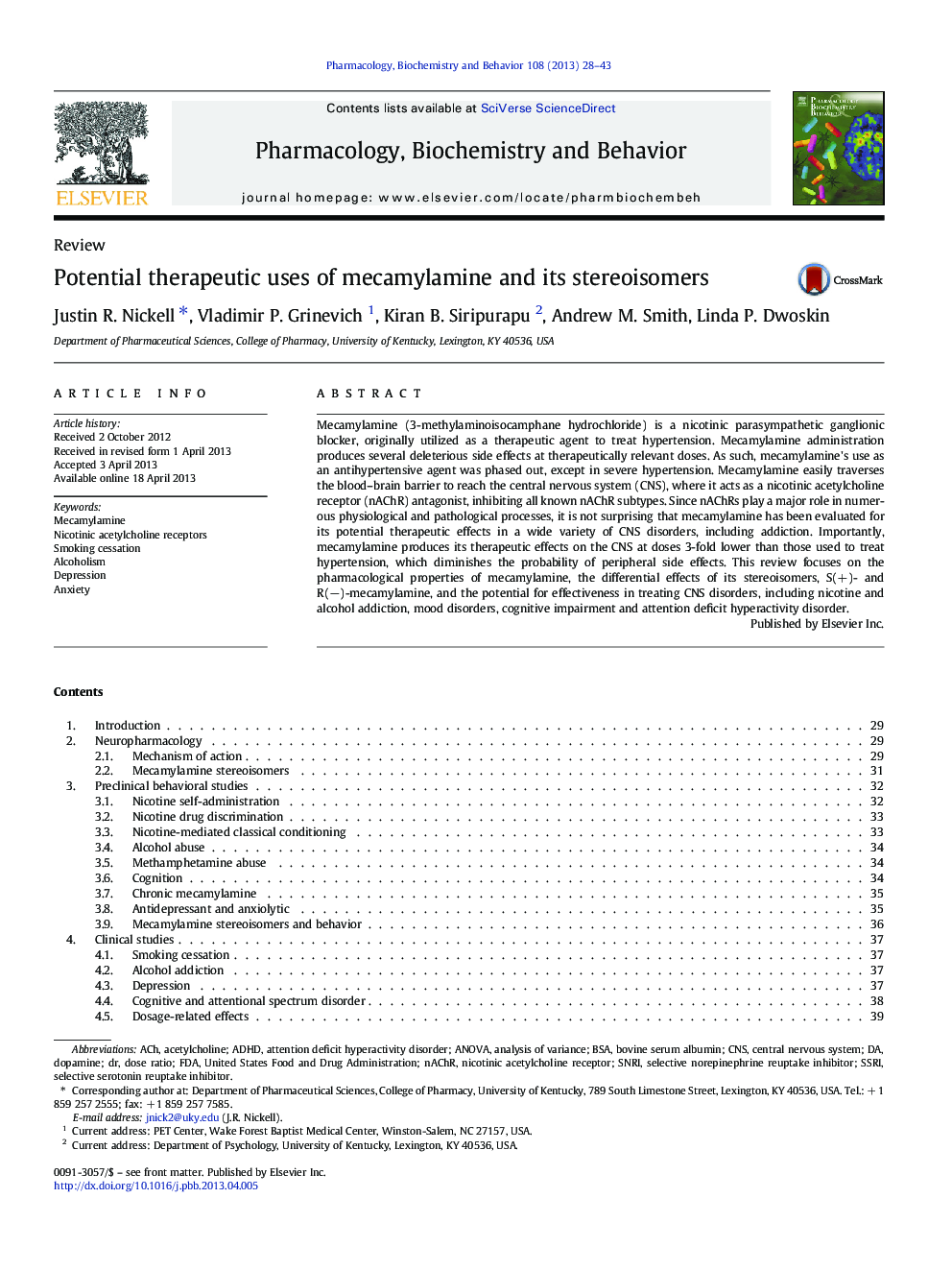| کد مقاله | کد نشریه | سال انتشار | مقاله انگلیسی | نسخه تمام متن |
|---|---|---|---|---|
| 8351902 | 1541875 | 2013 | 16 صفحه PDF | دانلود رایگان |
عنوان انگلیسی مقاله ISI
Potential therapeutic uses of mecamylamine and its stereoisomers
ترجمه فارسی عنوان
استفاده از درمان های بالقوه مک کامیلامین و استئوزیمرهای آن
دانلود مقاله + سفارش ترجمه
دانلود مقاله ISI انگلیسی
رایگان برای ایرانیان
کلمات کلیدی
FDASNRInAChRBSA - BSAbovine serum albumin - آلبومین سرم گاوACh - آهattention deficit hyperactivity disorder - اختلال کمتوجّهی _ بیشفعالیUnited States Food and Drug Administration - اداره غذا و داروی ایالات متحدهAcetylcholine - استیل کولینAnxiety - اضطرابDepression - افسردگیAlcoholism - الکلیسمSelective norepinephrine reuptake inhibitor - بازدارنده مجدد نوراپینفرین انتخابیADHD - بیشفعالیanalysis of variance - تحلیل واریانسANOVA - تحلیل واریانس Analysis of varianceSmoking cessation - ترک سیگارCNS - دستگاه عصبی مرکزیDopamine - دوپامینcentral nervous system - سیستم عصبی مرکزیSelective serotonin reuptake inhibitor - مهار کننده بازجذب سروتونین انتخابیSSRI - مهارکنندههای بازجذب سروتونینMecamylamine - مکامیلامینdose ratio - نسبت دوزnicotinic acetylcholine receptor - گیرنده استیلکولین نیکوتینnicotinic acetylcholine receptors - گیرنده های استیل کولین نیکوتین
موضوعات مرتبط
علوم زیستی و بیوفناوری
بیوشیمی، ژنتیک و زیست شناسی مولکولی
زیست شیمی
چکیده انگلیسی
Mecamylamine (3-methylaminoisocamphane hydrochloride) is a nicotinic parasympathetic ganglionic blocker, originally utilized as a therapeutic agent to treat hypertension. Mecamylamine administration produces several deleterious side effects at therapeutically relevant doses. As such, mecamylamine's use as an antihypertensive agent was phased out, except in severe hypertension. Mecamylamine easily traverses the blood-brain barrier to reach the central nervous system (CNS), where it acts as a nicotinic acetylcholine receptor (nAChR) antagonist, inhibiting all known nAChR subtypes. Since nAChRs play a major role in numerous physiological and pathological processes, it is not surprising that mecamylamine has been evaluated for its potential therapeutic effects in a wide variety of CNS disorders, including addiction. Importantly, mecamylamine produces its therapeutic effects on the CNS at doses 3-fold lower than those used to treat hypertension, which diminishes the probability of peripheral side effects. This review focuses on the pharmacological properties of mecamylamine, the differential effects of its stereoisomers, S(+)- and R(â)-mecamylamine, and the potential for effectiveness in treating CNS disorders, including nicotine and alcohol addiction, mood disorders, cognitive impairment and attention deficit hyperactivity disorder.
ناشر
Database: Elsevier - ScienceDirect (ساینس دایرکت)
Journal: Pharmacology Biochemistry and Behavior - Volume 108, July 2013, Pages 28-43
Journal: Pharmacology Biochemistry and Behavior - Volume 108, July 2013, Pages 28-43
نویسندگان
Justin R. Nickell, Vladimir P. Grinevich, Kiran B. Siripurapu, Andrew M. Smith, Linda P. Dwoskin,
